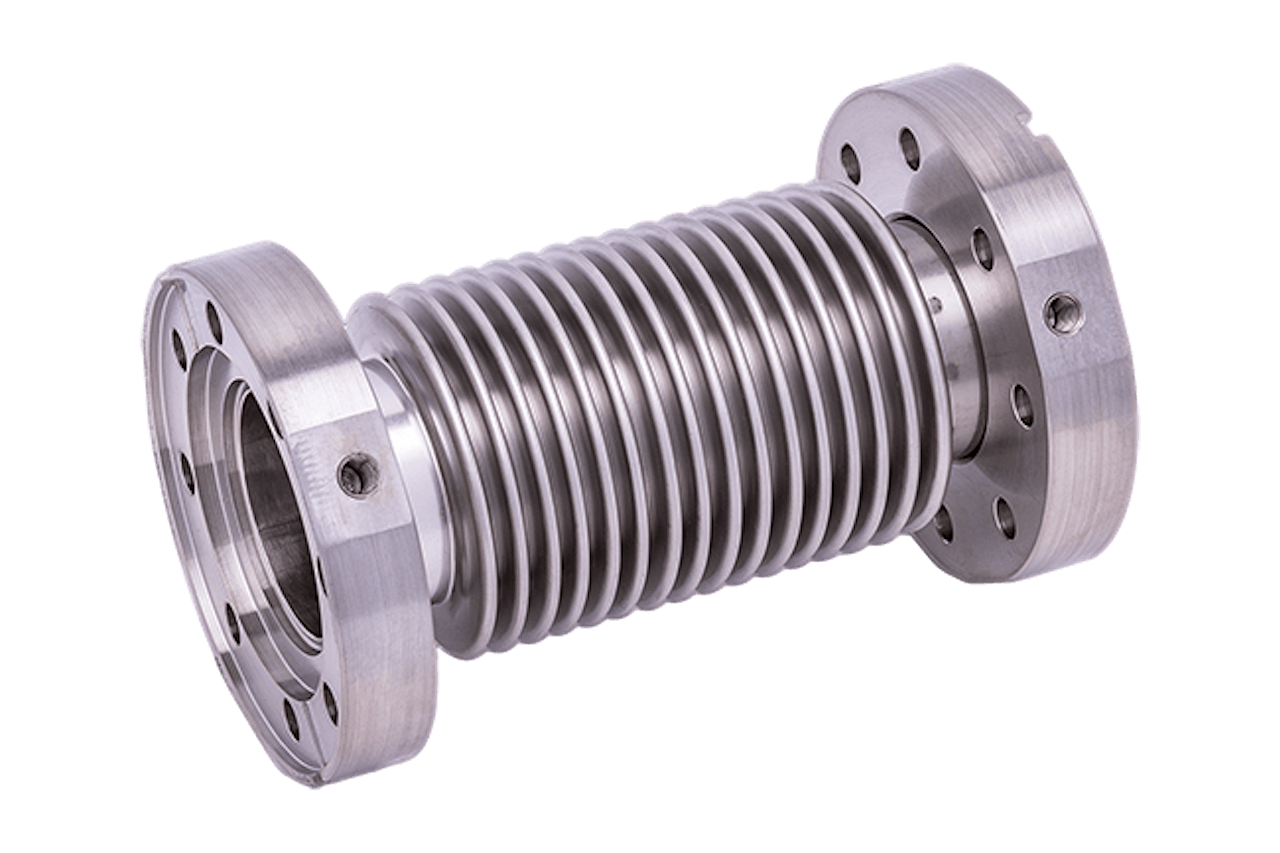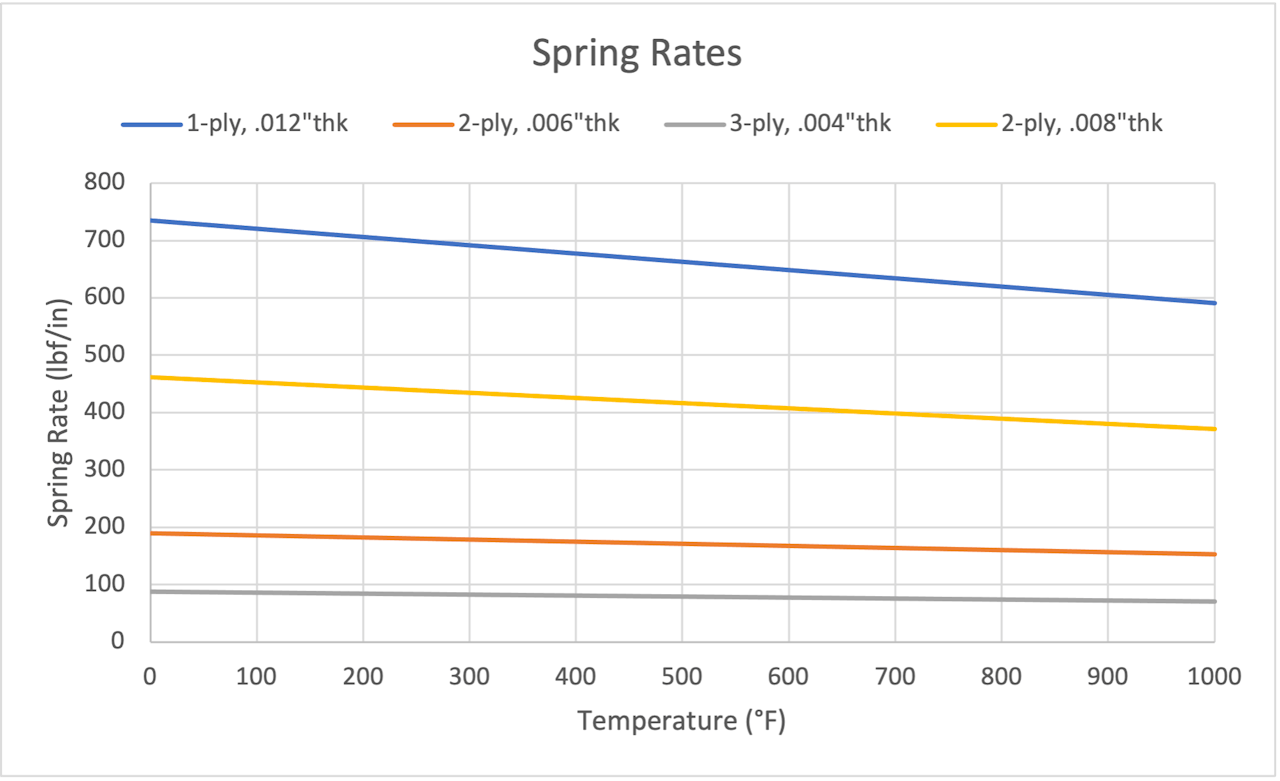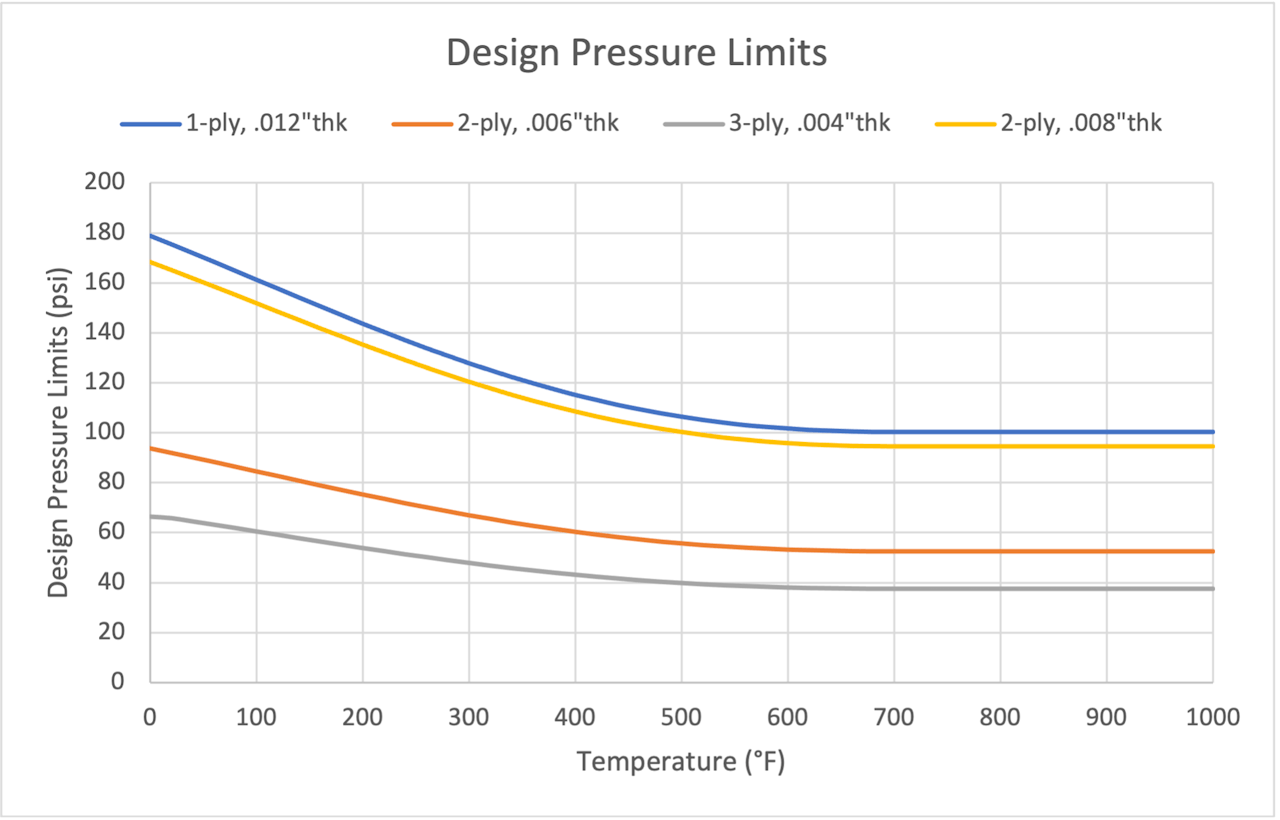Single-Ply Bellows Vs. Multi-Ply Bellows
Multi-ply bellows are metal bellows that consist of two or more layers of metal material. The preference for single versus multi-ply bellows is determined by the use case and desired specifications. For example, multi-ply bellows offer a lower axial spring rate than single-ply bellows and are commonly found in high-pressure environments or where vibration may exist due to their added resilience and flexibility under these conditions. These features make them ideal for expansion joints.
For more information about the differences between single-ply and multi-ply bellows, including possible spring rates, pressure limits, and implications regarding cycle life, continue reading. Or contact us to order custom single and multi-ply bellows or expansion joints.

Visuals for Single-ply vs. Multi-ply Bellows
The figures below show a cross-sectional comparison between single-ply bellows (on the left) and multi-ply bellows (on the right).

Specifications for Single-Ply & Multi-Ply Bellows
When designing bellows for an application, it is important to consider whether single-ply or multi-ply bellows are more suitable for your application. One of the most crucial benefits of multi-ply bellows is the ability to sustain pressure while lowering the spring rate. The table below shows a comparison between single-ply bellows and two-ply bellows. By sacrificing pressure capability slightly, the two-ply bellows can achieve higher cycle life and lower spring rate.
Single & Two-ply Bellows Comparison (SS321, at 80°, ±0.25" Axial Movement)
| Parameters | 1-ply, 0.12" thick | 2-ply, 0.008" thick per ply |
|---|---|---|
| Spring Rate (Ibf/in) | 723.2 | 453.5 |
| Pressure Limit (psi) | 164.9 | 155.3 |
| Cycle Life | 1306 | 7950 |
Single-Ply Bellows Vs. Multi-Ply Bellows Specifications
A series of charts below show further theoretical comparison between single-ply bellows and multi-ply bellows at various operating temperatures. The bellows material, ID, OD, length, and pitch remain constant across all scenarios, while the number of plies and ply thickness varies. These charts illustrate the significance of additional plies to the overall design of the bellows.



Contact Us for Custom Metal Bellows
At Ameriflex, we produce single- and multi-ply bellows with up to five plies or layers. We design and analyze all bellows using Standards of the Expansion Joint Manufacturers Association (EJMA) and ASME BPVC.VIII.1, Appendix 26. By providing us with your operating parameters, we can customize the bellows design to fit your exact application.
Contact us today to have our Ameriflex engineers custom-design your perfect bellows!